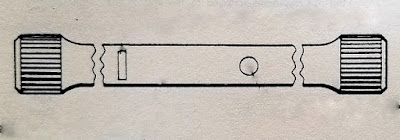When the Alfa Romeo GTV6 hit American shores in 1981, the car we received was modified to meet DOT and EPA standards. Luckily, there weren't drastic differences between European and North American spec cars. .
Some of the main differences between a North American and Euro-spec GTV6:
- Impact absorbing bumpers
- Standard Leather interior (1981-84) and air conditioning
- US-approved sealed beam headlights and side markers
- 85 mph speedometer (used on cars through 1983)
- Catalytic converter with Lambda control and specific engine calibrations
- Catalytic converter overheat and oxygen sensor replacement warning light
- New ignition distributor with a different advance curve and added vacuum retard mechanism
- Slightly less power: 154 hp @5500rpm vs. Euro's 158 hp @5600rpm / 151.9 lbs.Ft @3200 rpm vs. Euro's 156 lb.Ft @4000 rpm
- Raised ride height to meet DOT headlight height standards
A common modification to US GTV6 models is lowering the front end height to European specifications or even lower. This can be "easily" done by adjusting the front torsion bars. I use quotations around "easily" because 40 years later, the torsion bars may be rusted or frozen in place and a bear to unseat.* Dealing with that is a story for another day.
How To Check Your GTV6's Ride Height
Below are the GTV6 ride height specifications if you want to check yours. These checks are done with stock tire sizes, pressures, and a specified weight of 210kg / 462 lbs added to your car in specific locations. This weight corresponds to three people that weigh 154 lbs each. I feel sorry for the person sitting in the back seat on the center storage tray!
US GTV6 models have a center tray between the rear seats. European cars that I have seen do not. If you have a European car that has the tray, feel free to let us know in the comments!The manual tells you to disconnect the sway bar and shock absorbers front and rear to remove any of their influence on ride height. They also want you to loosen the Watts linkage bolts to the body. It is hard to say how many people do that, but it makes sense. Owning an older Italian car was never going to be easy.
Once you have the weight loaded into your car, you measure the differences between the two locations. Location "A" is at the bottom of the ball joint stud. Location "B" is the bottom of the lower control arm mounting bracket. Below are the specs:
1981 European Alfa GTV6 Front Ride Height**
- B-A=44MM +/-5
- B-A=50MM +/-5mm
US Spec 1982 Alfa GTV6 Front Ride Height
- B-A= 60MM +/-5
** Original 1981-82 European Inspection Specification Manual (publication date 1/81) states 44 mm ride height. The late manual for model years up to 1983 model year ( publication date 3/84) uses 50MM spec and states this manual replaces and supersedes all older manuals on the subject. Which measurement do you use? Taken at face value, the later manual is supposed to be the revised measurement. If you are new to older Alfas, get used to discrepancies and ambiguities like this.
Note: Left and Right side differences should not exceed 5mm.
For the rear, the measurement when loaded is the same for the US and European markets. The "C" measurement should be 34 mm +/- 5 mm. It can be adjusted by inserting a shim in the upper spring seat. At one time, shims sized 7,14 and 21 mm were available through your dealer. Now, you'll have to make them. An Alfa Romeo technical bulletin cautions to not use a shim larger than 21mm as coil binding may occur.
Okay, but I don't have three friends weighing 154 lbs each, and I've got other things to do. So how's this info going to help?
You can use the above information to plan your lowering target.
As you can see, the difference in height between a US and Euro car at the specified weight is nominally 10mm, but taking tolerances into account, it may be as much as 26mm. Interestingly, the original European 4-cylinder Alfetta models from the early 70s use the 39 to 44 mm spec.
Keep in mind if you want to lower your car, there are some negatives. Be warned that the GTV6 is already prone to grounding on speed bumps, driveways, etc. If you run headers and lower your car, you will likely dent them. Also, the engine's beautifully finned oil sump becomes even more vulnerable.
Lowering a GTV6 too much can result in excessive negative camber, necessitating modifying the lower control arm mounts to bring the car back to specs. In addition, the suspension geometry can be affected, diminishing the handling. Also, the car will be prone to constantly bottoming out on the bump stops, ruining the ride. And, of course, a wheel alignment should be done after any suspension work.






